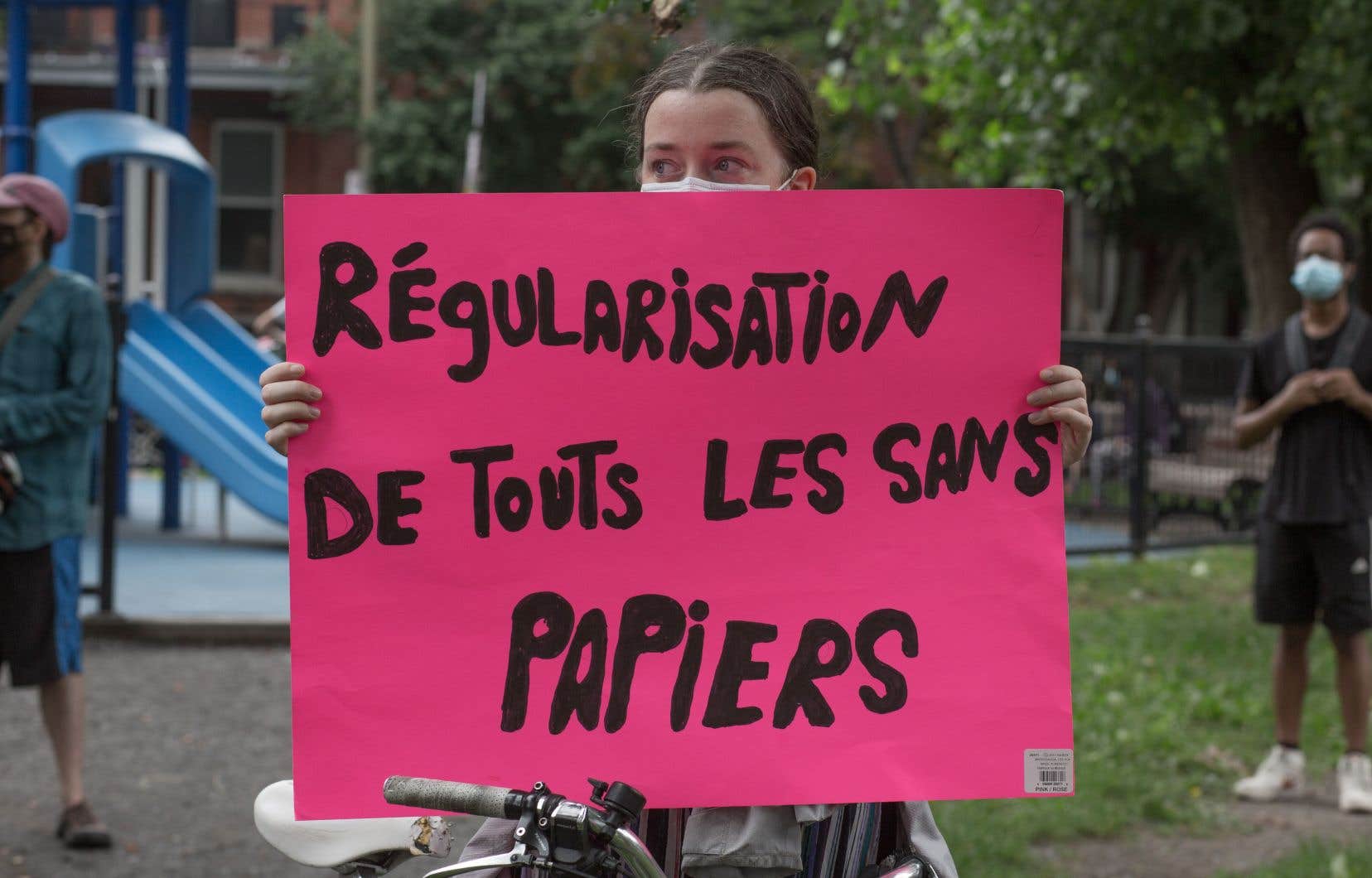Despite some popular pressure, the regularization program for undocumented migrants, on which the federal government has been working for 18 months, is long overdue. Fifty years after the largest operation of its kind in Canada, experts are deciding on the winning conditions for such an operation.
August 15, 1973. Under the leadership of Pierre Elliot Trudeau, the largest regularization program in Canadian history is put in place. Following the passage of a bill with virtually no opposition, some 39,000 people without status, including dependents, were able to obtain permanent residency. Other targeted regularization programs have been implemented in recent decades, but have not exceeded 4,000 admitted.
“In what I have been able to consult as archives, the 1973 program seems [être un programme] on which the government relies heavily. It should reach as many people as possible. There is no limit,” explains David Moffette, professor of criminology at the University of Ottawa, expert in Canadian and European immigration policies.
Open to all nationalities, the program Adjustment of Status — called “Opération mon pays” in French — was aimed at people without status who were on Canadian territory and holding a work permit was not even necessary.
And in order not to make anyone “jealous”, students who had a temporary visa were also allowed to apply for the program. “In the end, it was anyone who was on Canadian territory on November 24, 1972,” summarizes Mr. Moffette.
But despite all the publicity made to make it known, the program did not give the expected results and disappointed the authorities. Deemed “ridiculous”, the 60-day deadline for applying was one of the elements of its failure.
Nevertheless. How did Canada come to the conclusion that it was in its interest to bring thousands of people out of hiding to become residents and, ultimately, full Canadian citizens? “It was a corrective strategy,” argues Professor Moffette. Five years earlier, people with visitor visas had been allowed to apply for permanent residency once in Canada. Faced with a real rush to the country of the Rockies, especially Americans not wanting to fight in Vietnam, this measure was finally canceled, creating a huge inventory of requests, especially those on appeal.
And now ?
Fifty years later, is the federal government ready to launch a major regularization program? Certainly, the mandate letter given to Immigration Minister Sean Fraser in December 2021 was clear and instructed him to “continue to explore ways to regularize the status of undocumented workers”.
David Moffette believes Justin Trudeau may want the program to be a form of legacy, echoing what his father once did.
Anyway, the announcement is late. And militant groups, such as Solidarity Across Borders, are stepping up public actions to exert pressure. “But at present [le public] reacts a bit like in Europe and the United States. [Il veut] border closures. We are not in an era of openness. It’s as if we didn’t understand the real positive weight of immigration, ”says Annick Legault, lawyer at the Clinic for Migrant Justice, who openly campaigns for regularization.
David Moffette argues that the government could be tempted to “sell” its program with economic arguments in the context of a labor shortage. But he says he hopes it will also carry a more “social” dimension, as is the case in several European countries. Since the 2000s, status regularization policies have been regularly created in countries such as Italy, Spain and many others.
“It’s considered normal there. If you have a million undocumented people in your territory and you know it is only going to increase, it is normal to want to periodically reset the counters and ensure that everyone has access to services”, explains Professor Moffette, who has studied Spain’s programs very closely. In this country, half a million people were regularized in 2006.
On the other hand, Mr. Moffette recalls that in Europe several regularization programs do not give access to residence but rather to a temporary permit.
“If the objective is to get a good number of people out of irregularity so that they can work with dignity and have access to health care, the program set up by the government must [canadien] gives permanent residence, and not just a work permit”, insisted the professor, who makes it one of the “winning” conditions.
Winning conditions
But first of all, for people without status to apply in large numbers, it is still necessary to assure them that they will not be denounced or expelled if ever the regularization process does not work. “In 1973, non-profit organizations, religious communities were responsible for collecting the names of candidates,” explains Mr. Moffette.
It is also necessary that the application period be sufficiently long and that the person can at least obtain a work permit while waiting for the processing of his file. Nor should the costs be prohibitive.
Annick Legault pleads for a “truly inclusive” program, not restrictive as was, in her opinion, that of the guardian angels. “We should not copy and paste on some pseudo-regularization programs that have been put in place, because there were too many restrictions,” she insists. “The most important thing is that it is not discretionary and that it remains simple. People shouldn’t need to be represented, they should be able to fill in the forms themselves. »
Me Legault, whose legal clinic struggles to meet demand, believes that a regularization program is basically a gesture of “humanity”. “It’s recognizing all that these people give to society. And at the moment, it’s far from being charity that we’re doing to them. It’s hard won. »
